Apple's September presentations have long been expected to bring unexpected new products. Obviously, new iPhones and Apple Watches will be presented, and sometimes AirPods, as they did this year. Most details about the new devices become known long before the presentation, and the structure of the event itself is so established that it does not cause much discussion. However, it is important to understand which of the new products are a real step forward, and which have received only minor updates.
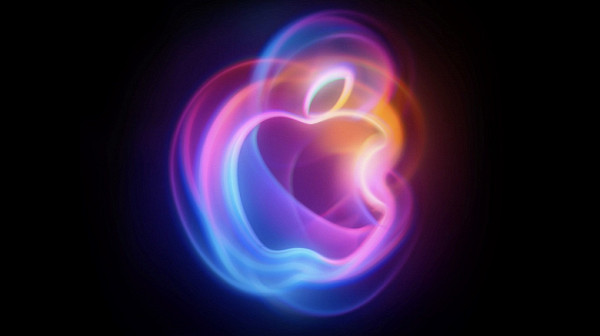
So, Apple introduced the Apple Watch Series 10, AirPods 4, iPhone 16 and 16 Pro, and also announced improvements in AirPods Pro 2. We will tell you about them in the same order in which they were presented.
Apple Watch Series 10
The new generation of Apple smartwatches received the symbolic number 10, however, unlike the iPhone X, the manufacturer did not use a Roman numeral. These are just details. Much more disappointing is the lack of a significant technological breakthrough. However, it cannot be said that there are no changes at all. Apple brought the standard Watch closer to the Ultra version: it increased the screen, added water temperature and depth sensors, and also released a model with a titanium case (which almost doubles the cost from $399 to $699, bringing it closer to the Ultra 2, which starts at $799). But let's take a closer look at this.
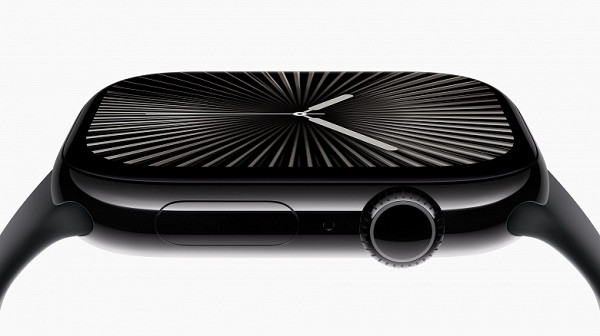
The Series 10 case has become slightly thinner compared to the previous three generations: 9.7 mm versus 10.7 mm. The weight has also decreased. Depending on the screen size and the presence of LTE, the weight varies slightly, but on average, the aluminum version has become 10% lighter. And if you compare the titanium case with a similar stainless steel version, the difference is even more noticeable — about 20%.
At the same time, the screen area has also increased: in the older version of the Series 10, it is 1220 mm² versus 1143 mm² for the Series 9. Instead of the previous sizes of 41 mm and 45 mm, options with 42 and 46 mm are now offered. Interestingly, the display of the 46 mm version is larger than the Apple Watch Ultra, despite its larger case (49 mm), because the screen area of the Ultra is 1185 mm².
One of the slides in the presentation clearly shows how the display has increased, but the comparison was not with the last three generations, but with Series 6, when the screen was even smaller than Series 7/8/9. This is an interesting marketing move, don't you agree?

There are two important innovations worth noting here. First, the screen has become 40% brighter when viewed from an angle. Second, instead of LTPO OLED, Series 10 uses LTPO 3.0 OLED. The main advantage of the new matrix is its improved automatic refresh rate adjustment capabilities, which vary from 120 Hz to 1 Hz. This is especially useful for watches, as it allows you to save battery power. However, the declared operating time on a single charge has not changed: 18 hours in normal mode and up to 36 hours in power saving mode. Perhaps the reduction in the thickness of the case is due to a reduction in battery volume, although it is difficult to say for sure — Apple, as usual, does not disclose the battery capacity in watts or milliampere-hours. Against the background of competitors, whose devices with similar functionality can work for several days or even a week, this decision looks strange. We assume that Apple for some reason cannot significantly increase autonomy and does not see the marketing sense in gradually improving this indicator. Focusing on this would have drawn undesirable comparisons with competitors, so the company has focused on other aspects: a larger screen and the introduction of new features, but the watch still needs to be charged almost every day.
However, the Series 10 has improved fast charging: now you can charge the device to 80% in 30 minutes (previously it took 45 minutes). So if you forgot to charge the watch overnight, you can save 15 minutes in the morning, which can be very useful before leaving the house.
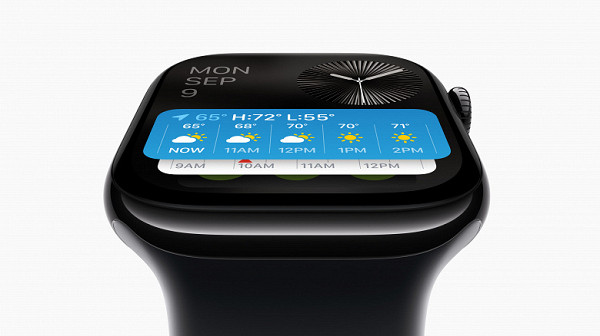
Among the hardware innovations, we can note the appearance of depth sensors and water temperature measurement, thanks to which a new sport has been added — snorkeling. Although for our latitudes this function is not very relevant. But the appearance of a titanium case is certainly pleasing, despite the significantly higher price. Yes, this was already in the Watch Ultra, but not everyone likes the design of the flagship model: it is too massive and brutal, clearly aimed at a male audience. While Series 10 looks much more universal and suits any style.
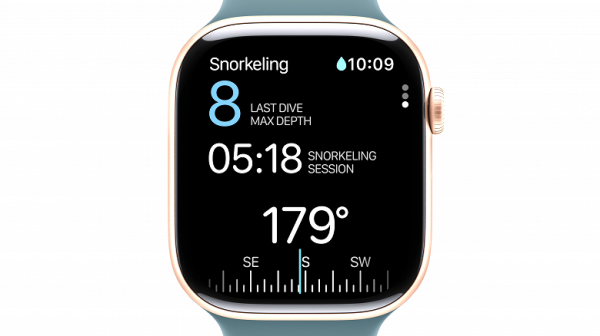
The rest of the innovations concern software, and we will discuss them in detail when testing the new models. But the new function of recognizing sleep apnea — short-term pauses in breathing — deserves special attention. According to Apple, about a billion people worldwide suffer from this, and many do not even suspect that they have a problem that can be dangerous to health. The watch is able to detect such breathing disorders and recommend the user to consult a doctor.
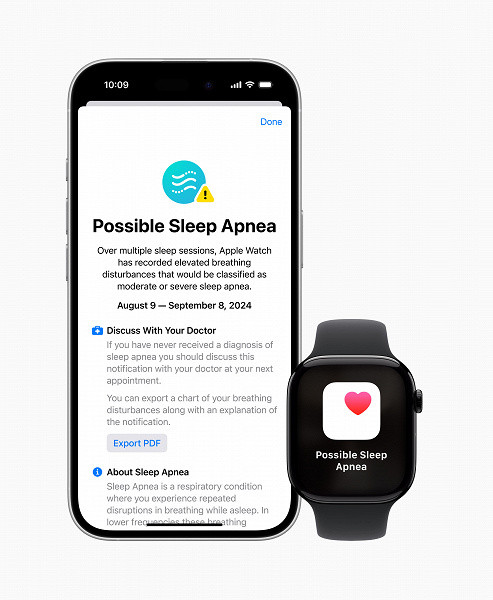
However, it is worth noting that the apnea recognition function will also appear on previous generation watches with an update to the new OS version — this does not require special sensors.
Overall, the Apple Watch Series 10 looks decent, but perhaps more was expected from the anniversary model. And the manufacturer has practically not updated the Apple Watch Ultra, except for adding a black case color.
New AirPods 4 and Improvements in AirPods Pro 2
Apple did the same with headphones. AirPods Max got new colors and a USB-C connector, which is certainly nice, but hardly adds functionality. But the more affordable AirPods earbuds have been significantly improved. In addition, AirPods Pro 2 will get new features.
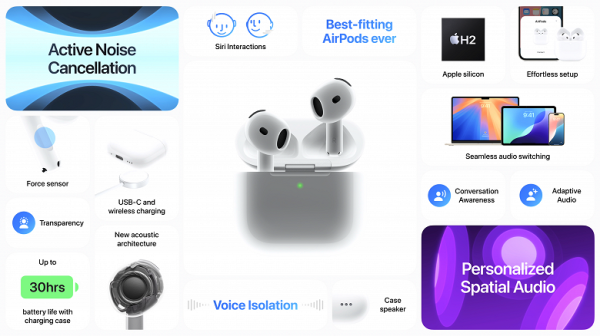
Active noise cancellation is now available not only in the Pro models, but also in the basic version of AirPods. You can choose AirPods 4 with or without noise cancellation (the price difference is $50). The question remains how effective the noise cancellation will be without the silicone tips that usually help block out external sounds. Only testing will answer this question.
In our opinion, the previous version of AirPods did not provide a tight fit in the ears for high-quality noise cancellation. However, Apple claims to have improved the design, making it more universal and suitable for most users.
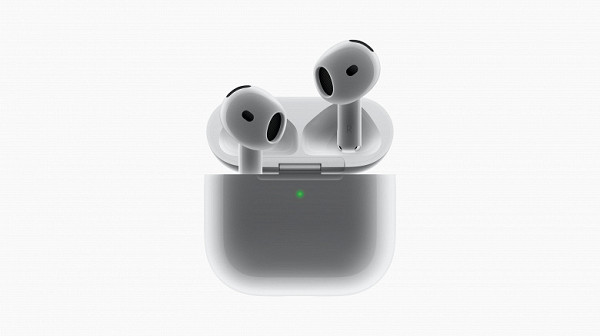
The acoustic architecture has also been updated. But again, only practice will tell whether this has led to a noticeable change in sound quality, especially considering that the previous models already sounded pretty good for their form factor.
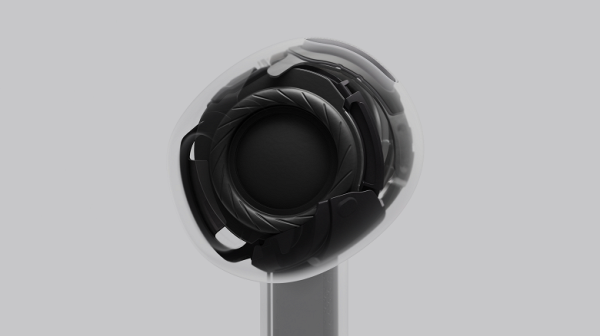
The new Voice Isolation feature will definitely not disappoint users. The point is that when you are outside and talking on the phone with AirPods, the other person should hear only your voice, and not the noise of cars and other extraneous sounds. Great, right? The main thing is that this feature works well. It is assumed that the new H2 chip will ensure high-quality functioning of Voice Isolation, and will also expand the capabilities of interaction with Siri: now the voice assistant will be able to understand your nods in agreement and shaking your head as a refusal.
Among the less significant innovations is a 10% reduction in the size of the case (which is certainly useful, since the current case is not always convenient to carry in your pocket) and the ability to charge it from the Apple Watch charger. The presentation also mentioned support for wireless charging of the Qi standard, but in the previous generation, the case with a Lightning connector also charged from third-party Qi accessories. So Apple is exaggerating a little.
As for AirPods Pro, the new model was not presented, but improvements were reported in the existing model — AirPods Pro 2. The main changes are related to the implementation of a comprehensive hearing protection program.
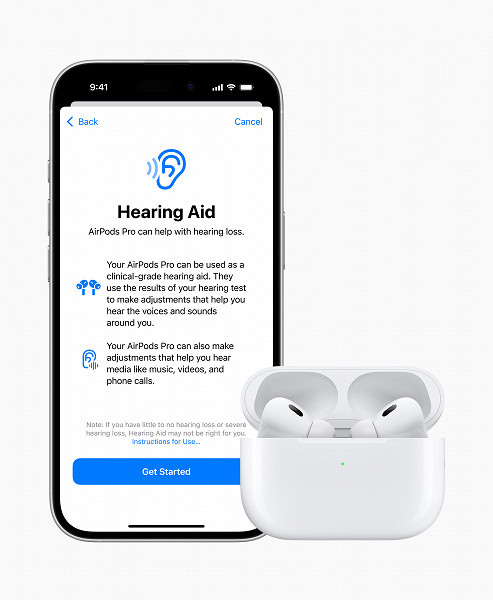
The purpose of the new feature is to reduce the impact of excessively loud ambient sounds, such as in the subway or at sporting events, using active noise cancellation. However, wearing headphones in such conditions all the time may not be very comfortable. Nevertheless, for those who spend a lot of time in such situations, this option may be useful.
If you have already experienced the negative impact of loud sounds or are concerned about the state of your hearing, AirPods Pro 2 will provide the opportunity to undergo a full test, based on which you can decide whether to consult a doctor.
iPhone 16 и iPhone 16 Pro
Finally, let's move on to the iPhones. We won't go into the details of the presentation — you can read about that in the news about the Pro models and regular versions. It's more important to understand what progress has been made compared to the previous generation and what trends in the industry Apple is trying to set.
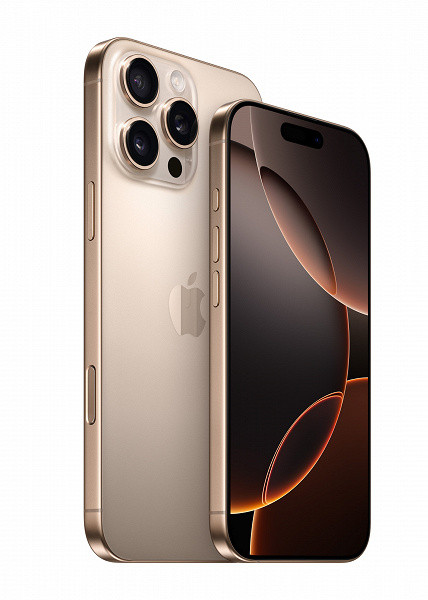
The main and most noticeable innovation was the addition of the Camera Control element, which is responsible for working with the camera. This is a small touch zone, recessed into the body and located on the edge of the device. With its help, you can not only control the shutter release, but also adjust various shooting parameters using swipes, long presses and touches.
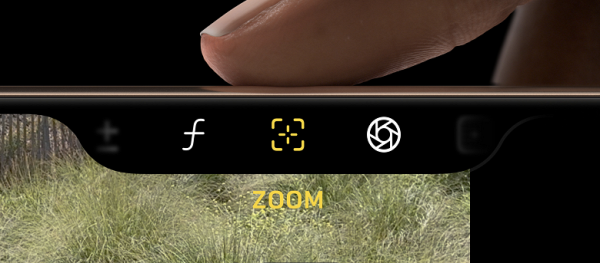
Camera Control is now available not only on the iPhone 16 Pro, but also on regular iPhone 16 models. Apple has decided not to limit this feature to the premium segment, and it can be assumed that other smartphone manufacturers will follow suit, especially considering that shooting has become one of the key functions of mobile devices.
Interestingly, Apple has previously actively sought to reduce the number of physical controls in smartphones, and is now taking a step in the opposite direction. But this is not the only thing that attracts people to the new generation of iPhones.
The presentation also talked a lot about artificial intelligence technologies in smartphones. In particular, attention was focused on the Apple Intelligence system, presented in June. Although the description of this system looks quite futuristic and its full capabilities can be assessed no earlier than 2025 (in addition, it will only work in English), many of the promised functions will probably become familiar quite quickly. AI is planned to be used to improve text, edit photos, create emoji, protect information and other everyday tasks.
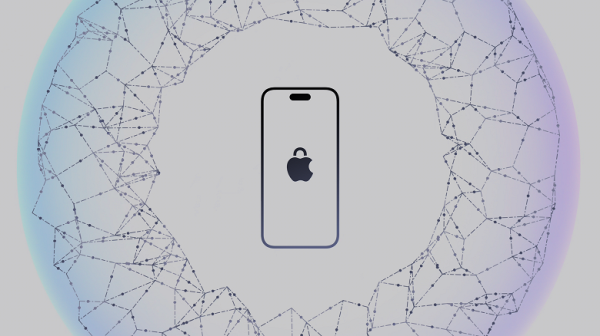
In terms of hardware changes, there aren’t many, and they look rather modest. The smartphones are powered by the new A18 and A18 Pro chips, but the number of cores remains the same as the previous models. The screen has grown slightly – by 0.2 inches (except for the base iPhone 16 model, which remains the same size as the iPhone 15). Wi-Fi is now version 7 instead of 6E, and the ultra-wide module in the Pro models has a resolution of 48 MP. But how significant is all this really?
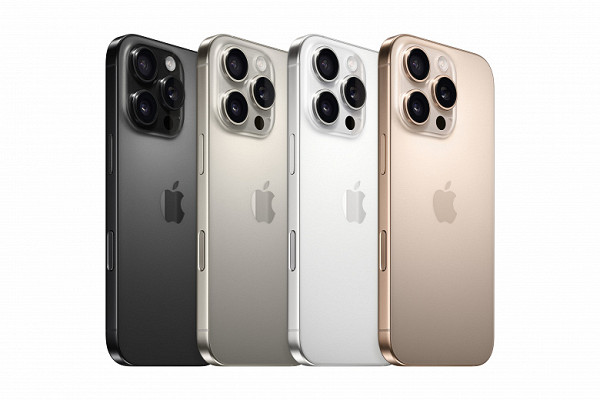
There is also some promising news: firstly, the iPhone 16 Pro has significantly improved audio quality when recording video, and secondly, this model can be used to create 3D photos and videos that are then played back on the Apple Vision. The first could be an important tool for low-cost film projects and reportage work, and the second could give a boost to the virtual reality industry. However, as in other cases, it will be necessary to see how all this works in practice.
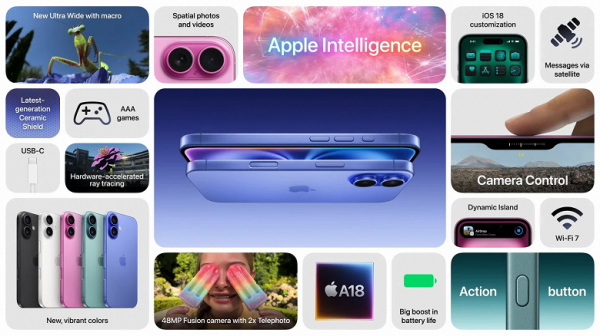
The younger model, unlike its predecessor, demonstrates more confident progress. The design has changed (although we have already seen some elements from Apple), two new buttons have been added — not only Camera Control, but also a customizable Action Button, which was previously available only in the Pro model. In addition, the battery capacity has been increased. Now it remains to wait for practical tests to evaluate all these innovations.
